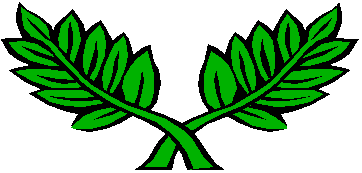
 62. Dickinson College, founded 1783 at Carlisle. 63. Monument to Molly Pitcher, Carlisle, heroine of the battle of Monmouth, June 28, 1778. Molly carried water to the soldiers and served a cannon when her husband, an artilleryman, was wounded. 64. Drawbaugh telephone in Historical Society, Carlisle. Daniel Drawbaugh is said to have invented the telephone but lost his case in the Supreme Court, the patent having been given to Bell. 65. Ancestral home of the fighting Butlers at Carlisle. Thomas Butler established a Gun Shop here in 1760. His descendents were famous in every war in which this country took part. 66. Grave of John Harris, trader, pioneer settler and patriot: founder of Harrisburg. 67. Paxtang Church and Cemetery. Much historic interest centers in this vicinity in connection with the Revolution and before when there was frequent trouble with the Indians. 68. Site of Fort Hunter, at Heckton, built by settlers immediately after two terrible Indian massacres at Penn's Creek and Mahanoy Creek, 1755. It was an important point between Harris Ferry and Fort Augusta. 68a. Zion Lutheran Church, Harrisburg, where General William Henry Harrison was nominated for president by the Whigs in 1839. 70. Cornwall Iron Mines, which have been called the great metallic curiosity of the State. Here are vast deposits of ore. Furnaces in the vicinity furnished iron for Revolutionary cannon. 70a. Fort Swatara, near Hershey, one of a chain of forts erected by provincial authorities from the Delaware to the Susquehanna. 71. Grave of Conrad Weiser, near Womelsdorf. Conrad Weiser learned the Indian language in New York. In 1723 he came to Tulpehocken and was a prominent figure as an interpreter and diplomat to the Indians during the early days of Pennsylvania. 71a. Reading--was an important military base for a chain of frontier forts along the Blue Mountains, during the French and Indian Wars. During the Revolution, it was a Supply Depot, and the site of a camp where Hessian prisoners captured at Trenton were imprisoned. Its troops were the first, after Sumter, to respond to the call of Lincoln. 72. Near Amity, ancestral home of Mordecai Lincoln, the great-great-grandfather of President Lincoln. 73. Old Lutheran Church and Cemetery, Trappe, graves of the Muhlenbergs and Governor Shunk. 74. Grave of General Hancock, Norristown. Winfield Scott Hancock, hero of Gettysburg and Spotsylvania; Democratic candidate for President 1880. Senior Major General 75. Washington's Crossing, near Taylorsville (Delaware River). Washington's headquarters were at the Keith House December 14-25, 1776. His crossing of the Delaware to capture the Hessians at Trenton has been immortalized by Peale's famous painting. 76. Indian Town of Playwickey, near Langhorne. Site of an important Indian town in the first purchase of land from the Indians. 77. Battle of Crooked Billet. May 1, 1778. Present site of Hatboro. Americans under General Lacey, British under Abercrombie and Simcoe. American loss 26 killed, 8 wounded, 58 missing. 78. Easton, Indian Council, 1754 and 1761, The two Indian Councils held here were of great significance in the history of the Middle States. The great Eastern Conference of 1777 was for the purpose of persuading the Indians, in spite of English efforts to turn the Indians against the Americans, to at least remain neutral and in this, the conference was successful 79. Bethlehem, Moravian Settlement. Center of Moravian influence and culture in Pennsylvania. The trombone choir of the Moravians at Bethlehem is famous. 80. Fort Ralston, Bath, early Irish Settlement. Site of an important early fort and of the Scotch-Irish Settlement of great influence in the early days. 81. Site of Dupuis Fort, Stroudsburg. Part of Captain Weatherhill's Company was stationed here June 24, 1756. 82. Site of Fort Hamilton, Stroudsburg. Near this fort, Andreas Gundryman, 17 years old, was scalped by Indians, April 22, 1757. 83. Site of Fort Hyndshaw Stroudsburg. July 24, 1756, from this fort men were sent out to guard farmers who were harvesting. 84. Site of Fort Allen, Weissport. Blockhouse constructed in Jan.1756 by Benjamin Franklin and a troop of 100 men. It guarded passageway through the Lehigh Gap. 85. Gnadenhutten, 20 miles NE of Mauchchunk(?),site of massacre of the Moravian Indians, November 24, 1755,by French Indians. The survivors fled to Bethlehem. 86. Fort Everett. Built early in 1756 near Lynnport. 87. Allentown. The Liberty Bell and the chimes of Christ Church, Philadelphia, were hidden In Zion Reformed Church, 1777 88. Fort Franklin, Snydersville. Commanded by Lieutenant Engle, 1756. At this time numerous murders were being committed by the Indians in Berks County. 89. Pioneer Furnace, Pottsville, the first used to smelt iron with anthracite coal. 90. The home of Dr. Joseph Priestly, discoverer of oxygen, located in the town of Northumberland. Dr. Priestly was born in Yorkshire, England, March 13, 1733, died at Northumberland, February 6, 1804. He began experimenting at age of 11 and announced his discovery of oxygen in 1774. |

|
|
||
| previous page |
|
next page |
|
|
||